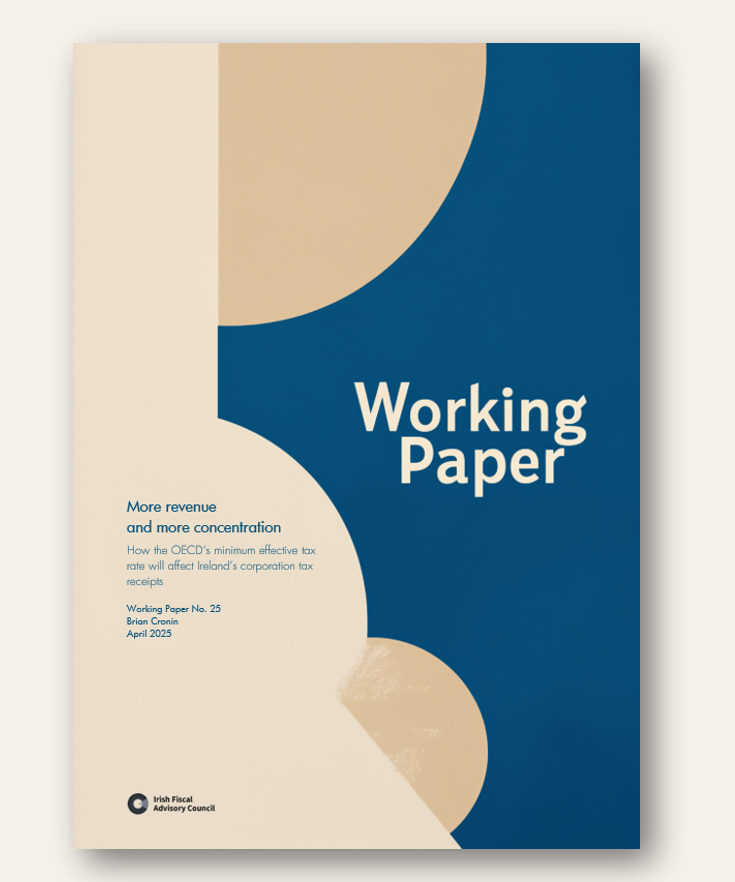How the OECD’s minimum effective tax rate will affect Ireland’s corporation tax receipts
Working Paper Nº 25 • Brian Cronin • April 2025

Ireland’s corporation tax receipts have surged in the past decade. Since 2015, they’ve grown to over a quarter of all tax receipts, having averaged closer to 13% for two decades. The receipts are highly concentrated, with just three firms estimated to have contributed 38% of receipts in 2023.
This paper shows how this concentration could be set to rise. It provides the first in-depth estimate of the impact of the OECD’s Pillar II reforms on Irish receipts. The reforms mean a 15% minimum effective tax rate for large corporations in Ireland, as compared to the 12.5% statutory rate.
The paper estimates that the reforms will increase Irish corporate tax revenues, but by less than other studies have suggested. Had the 15% rate been in place from 2018–2022, it estimates that revenues would have been, on average, 18% higher.
Crucially, virtually all of this additional revenue will be “excess”. In other words, it cannot be explained by underlying domestic activity. This will lead to Irish corporation tax receipts becoming even more concentrated among a relatively small number of large, foreign-owned multinationals.
The Government should avoid using these receipts to fund permanent commitments. It could instead save more of its excess corporation tax receipts, make realistic plans for health, housing, and climate challenges, and diversify its economy.
